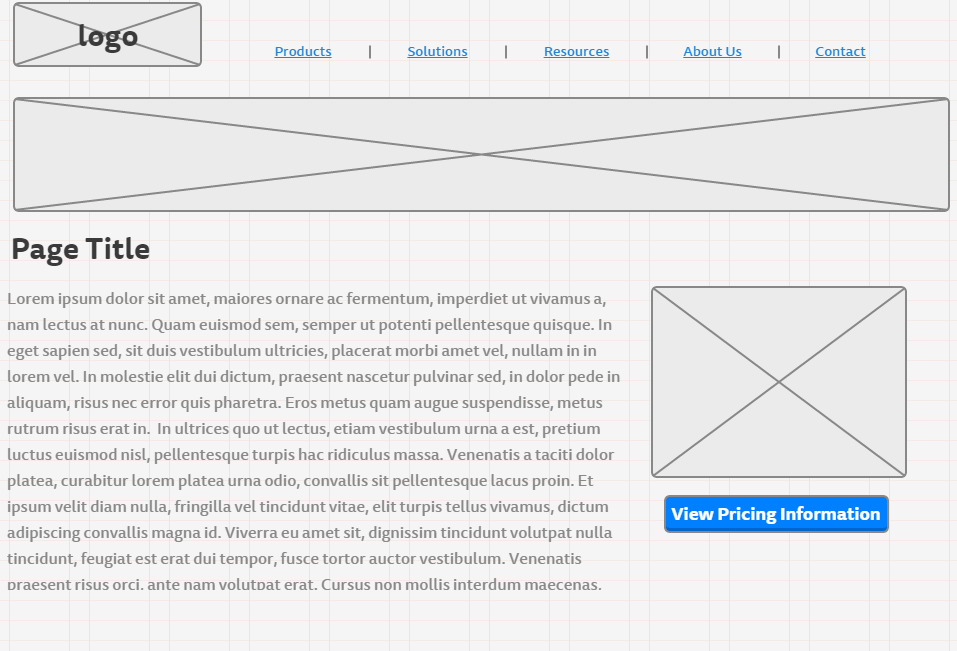Posted on 6/23/2015 in Digital Marketing
A web site is something that you are never truly done updating. A/B testing, or split testing, is one of the easiest ways to find out how to get the most out of your site. By testing different variants of a given web page, you can determine which version is performing the best and make a permanent change to your site. By testing and collecting actual visitor data, it takes the guesswork out of figuring out what page layout or content works best. There are paid services such as Optimizely geared towards non-technical folks, but you can also take advantage of Google Experiments and set everything up directly in Google Analytics for free.
Getting Started
The first thing to think about when starting A/B testing is: What is the goal of your test? Usually, a good candidate for split testing is a page that has a high bounce rate. If visitors are exiting your site from a particular page all the time, it often means that they aren’t finding the information they are looking for. Your pages should always have some type of call to action that guides them through your site to the next step towards conversion. A conversion doesn’t always mean a sale. You may just want them to click a button to contact someone for more information. Once you determine what the goal is for a user visiting that page, you are ready to set up your test.
Determine Your Variants
Although you can perform a multi-variant test (3 or more variations), A/B testing assumes that you test the original page layout against one other alternative version. For our example, let’s say that I have an existing web page that lists information about a product that I sell and there is a link at the bottom of the article that says “Click here for pricing information.”

My goal is to have visitors click that link, which will take them to another page with pricing and a way to buy. For my variation, I’m going to try to make that link more prominent and see if I can use things like placement, size, and color to entice more people to click. I’ll create a second page on my site that is a copy of the original (with a different URL) and adjust the layout to move the image to the right and turn the link into a brightly colored button that sits directly underneath the photo.

Set Up Your Google Experiment
Now that you have your variation created, it’s time to set things up in Google Analytics. First, make sure that you add an event tracking code to the link that you want visitors to click on in both your original and your variation. For non-developers, here is a handy link that will help you determine what code you need to add.
Next, set up the goal that you are tracking in analytics. For this experiment, we want to set up a goal for clicks on the pricing information link/button. This will be an event goal that falls into the “click” category.
Now you are ready to create your experiment. If you are in your Google Analytics account, you can access the Experiments section under the Behavior heading on the left menu. Once you click this, you will see the option to “Create Experiment” in the upper left part of your screen. Now you can simply follow the wizard to configure your experiment. For detailed instructions on how to set up your experiments, you can refer to Google’s documentation. The key things to know are:
- The code for the experiment should be placed ONLY on your original page
- Make sure that the objective for this experiment is set to use the goal that you set up in the previous step
Gathering Results
Once you are done setting up the experiment up, you can click “Start Experiment” and now you just wait to collect the data. Run the test for at least 100 conversions based on your Google Analytics goals to amass a large enough sample size. The amount of time it will take to collect this data will vary based on the amount of traffic you get on your site but once sufficient data is collected, you should have a clear winner from your test and can then make that version the permanent page that appears on your site.
This type of testing can be done for all types of pages on your site. For more guidelines on A/B testing, check out this blog written by one of our SEO Specialists that shows you how you can use A/B testing as your own free online focus group. Happy experimenting!
Related Articles

Elevating Your Brand: The Transformative Power of Website Design
In the digital age, your website is often the first point of contact between your brand and potential customers. It's not just a platform to showcase [...]

Navigating the Effects of SEO Algorithm Adjustments in 2024 on Your Website's Rankings
In the fast-paced world of digital marketing, staying ahead of algorithm updates is crucial for maintaining a competitive edge. As we step into 2024, [...]

Rethinking Digital Strategies: Marketing in the Post-Third-Party Cookie Landscape
In the ever-evolving realm of digital marketing, the impending demise of third-party cookies poses a significant challenge for businesses worldwide. [...]
